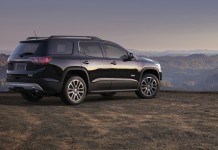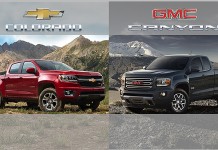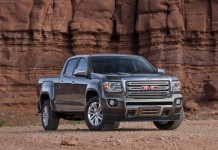As summer comes to a close, drivers across the U.S. are packing up their trailers, RVs, campers and boats for one last weekend in the sun. Yet, there are several mistakes that they often make when trailering. These mistakes can not only damage their trailer, but also their tow vehicle.
GMC’s lead trailering engineer and expert in all things-towing, Robert Krouse, has witnessed the good, bad and ugly when it comes to towing. In fact, the new 2011 GMC Sierra heavy-duty pickup is designed for towing, and provides drivers with the ability to tow 21,700 pounds and carry 6,635 pounds.
Heading into Labor Day weekend, Krouse offers the top five mistakes people make while trailering.
Mistake 1: Not knowing the actual weight of the trailer
The first priority is knowing the job that needs to be done and the weight of the trailer and items that are going to be towed. “I often see that customers have incorrect trailer weights and they will then underestimate the weight of the items they are putting on the trailer,” said Krouse. For example, many people will misjudge the weight of the gear or supplies, such as building and landscaping materials that are much heavier than people think they are.
The Solution:
Before a consumer loads up any trailer, it is essential to know exactly what the trailer and gear weighs. Many truck stops, sand and gravel yards, grain storage sites, moving companies and salvage yards often have scales open to the public. Krouse stresses that consumers need to “always check the total trailer weight and the trailer tongue weight before you tow anything.”
Mistake 2: Not knowing the actual capacity of the tow vehicle as equipped
Far too often, an individual will mismatch the vehicle to the trailer load, which must always be properly matched. Many websites provide only maximum trailer weight ratings (TWR), which means consumers need additional equipment to achieve the greatest performance for a vehicle that is not equipped with the maximum TWR.
The Solution:
For a new vehicle, a dealer can provide the vehicle weight information based on how the vehicle is equipped. For people with an existing vehicle, be sure to know exactly what the trailer weighs. After you know the trailer weight, Krouse recommends adding the trailer and tow vehicle to ensure the combination does not exceed the gross combination weight rating (GCWR). The owner’s manual also will provide vehicle ratings and capabilities.
“It is also important to consider the amount of people and gear that will be inside the vehicle and add that to the weight that is being towed,” Krouse said.
Mistake 3: Overloading the trailer or tow vehicle
Consumers often make the mistake of overloading and exceeding the TWR and GCWR as discussed in mistakes one and two, but it is also vital not to overload the trailer tongue weight, tow vehicle and trailer gross vehicle weight ratings (GVWRs), individual tow vehicle and trailer gross axle weight ratings (GAWRs) and individual tire ratings. “By putting too much weight on a trailer it can not only damage the trailer, but also the tow vehicle. Results can range from broken axles to bearing damage and excessive tire wear,” Krouse said.
The Solution:
TWR and GCWR should never be exceeded. If consumers follow the tips outlined in mistake one and two, it will ensure that they will be armed with the necessary information to avoid overloading and damage to the trailer and vehicle.
“At GMC we are constantly challenging ourselves to safely maximize and increase payload and towing ratings to meet our customer’s demands,” said Krouse. “Though, it is important that consumers do not overload their vehicles as these figures are set to keep the driver and vehicle safe.”
Mistake 4: Improper combination setup – including weight distribution hitch
After you have confirmed TWR and GCWR, it is important to make sure that the hitch ball, brake controller, sway controls and weight-distributing spring bars (if used) are properly installed and adjusted. “Too often I see that the hitch ball is too high or too low, the sway controls or weight-distributing spring bars are improperly adjusted and the brake controller may not be properly set up,” said Krouse. “It is common to see trailers with spring bars that are visibly curved upward and applying large amounts of torque to the hitch. “
The Solution:
The hitch ball height will depend on the tow vehicle’s rear Gross Axle Weight Rating. To manage the hitch ball height, on a level surface, use the trailer tongue jack with a level to determine the level trailer coupler height. If the trailer weight is at or near the tow vehicle’s maximum Trailer Weight Rating, the rear end may drop several inches when the trailer is coupled, Krouse said. If the trailer is lighter, consumers can assume about an inch drop when selecting the proper ball mount or drawbar.
Balancing the load over the length of the trailer is important. To make sure you have proper weight distribution, measure the height of the front fender, just above the center of one of the front wheels before the trailer is connected to the tow vehicle. After it is connected, the front end of the tow vehicle should rise slightly. It is important to apply only enough tension on the spring bars to restore the initial front end height but avoid bringing the front end to a lower position than where it started.
“If in doubt, I recommend always checking the owner’s manual to check vehicle ratings and capabilities and to follow the manufactures instructions to install and adjust any trailering feature,” Krouse said.
Mistake 5: General driving practices
One of the easiest ways to avoid mistakes while towing is to always practice safe driving techniques. The tow vehicle and trailer combination is often considerably heavier, longer and higher than the vehicle that is doing the towing. This combination makes it more difficult to maneuver, drive and stop the vehicle doing the towing.
The Solution:
When trailering, individuals need to always be aware of their surroundings. Krouse says that “people need to realize that accelerating – and therefore passing and merging – are more difficult with a trailer, and to pay extra attention to make sure there is adequate spacing between other vehicles before attempting to change lanes.”
He advises to make wider turns than usual because the trailer will track inside of the tow vehicle and possibly strike curbs, signs, trees or other vehicles on the inside of a turn, and to avoid low overhangs if the trailer is taller than the tow vehicle. In addition, Krouse suggest “avoiding quick or sudden maneuvers whenever possible.”
Finally, Krouse notes that consumers need to pay close attention to vehicle and trailer maintenance. When trailering, it is important to remember that the tow vehicle is working harder than it does alone, generally operating under higher loads and higher temperatures that require additional attention. Also, trailers often sit for long periods of time and require maintenance due to long periods of inactivity. “Either way, stay on top of maintenance, particularly paying attention to fluids, tires and brakes in the tow vehicle and brakes, bearings, tires and electrical systems in the trailer,” said Krouse.









